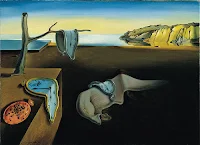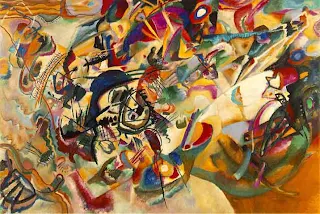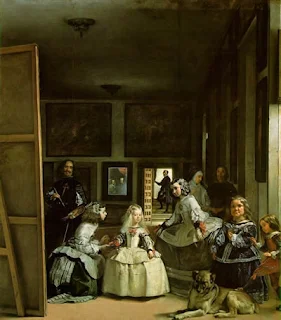I believe that a professional art instructor uses a wide variety of resources to improve both their own personal skill/knowledge base and the abilities of their students. In order to accomplish this, an educator must maintain high ethical standards, expect to keep his or her resources current, and reflect upon his or her successes/failures realistically. Collected under this Mostep, are several reflections I developed during my student teaching experiences in both high school and elementary school. Most of these lesson plan artifacts maintain the desired content and interests of the school districts I served during my state internship. The lesson plan prototype I use most frequently in this portfolio is the result of collaborative efforts made by my professors at UMSL University. UMSL professors require their students to develop lesson plans according to age, skill and state/national standards.
During the first week of my student appointment to a local high school, I soon discovered that my cooperating teacher had a great deal of enthusiasm and interest in teaching art. She spoke candidly and openly with her students about their personal interests, homework and family life. Most of her instruction was based upon the state GLEs that identify the development of principles and elements of design in student art projects. Although she seemed very enthusiastic about introducing additional resource material to her daily teaching routine, she had very few written documents describing lesson plans with this kind of attention to detail. The art staff employees at this high school were in the process of writing new curriculum online for the Fall Semester of 2011. I studied their curriculum software during weekly teachers' meetings. This particular program was designed to organize lessons into semester plans, not to describe specific daily activities. Therefore, the following eight lesson adaptations included below were based upon my own observations and a variety of classroom experiences. I also adapted the lessons in order to improve them for my own future use with students of similar age and skill level. There were four additional lesson plans covered during my student teaching at the high school. I have included these under different Mostep Standards.
The objectives introduced through the original collage project were based upon the GLEs for space and shape. The theme of the original lesson, the “artistic landscape.” During this lesson I was allowed to give a demonstration of collage techniques. Five or six students from each class actively observed and spoke with me during those demonstrations.
I altered many of the elements of this lesson plan. I changed the theme of it to surrealist dreamscapes, added a Power Point about Salvador Dali and the surrealist movement, and developed an additional activity for the assignment that involved small group readings of dream accounts. I kept the former standard requirements of space and shape and added art history, artist biography, vocabulary, alternative methods, and literacy standards.
2. “Just Duckie” Lesson Plan.
In the original color-mixing project, students were expected to learn about principles and elements covering tone, shading, and a value scale. The students rushed through this complicated assignment; they did not appear to enjoy the prospect of painting their paint bottles. During the assignment I spoke with every student about the proper way to mix paints. I also included information about adding complimentary colors into each other in order to mix more complex variations of their color choices. The students did not appear to have prior knowledge of this color-mixing technique.
"Just Duckie" is the written result of my adaptations to those problems surrounding required methods that are not always enjoyed by students. I switched out a few of the elements and principles and built a lesson plan based upon the concept of mixing complimentary colors and the art history standard involving important 20th century American artists. Color mixing projects are best suited to the inclusion of more interesting materials like an unusual object. I also developed a Pop Art slide show and a Power Point introducing 1960s cultural images for the lesson.
The one point perspective project I call "Graphic Graffiti"is an adaptation of a word art project frequently taught by my cooperating teacher at that high school. During this project I spoke personally with all of the students and sat at their tables to hear their conversation while drawing my teacher examples. I discovered their fondness for the assignment had to do with their love of graffiti artists.
I determined that this project would be well suited to a lesson plan based upon cultural imagery. This lesson could also help faculty to discuss teen issues surrounding city lifestyles in a creative forum. Topical discussions about violence, government, law, and human rights could be introduced under the study of this rich cultural art form. I developed a slide presentation about graffiti artists, purchased a film called, "The Outsiders" and included appropriate graffiti vocabulary in the curriculum. I also created a Power Point about fonts and some of the original uses of decorative lettering throughout history.
During the two point perspective project that immediately followed after the one point perspective word assignment, my CT built onto the students prior knowledge of word art by introducing the concept of drawing their words on a brick wall. She came up with the idea after our discussion about my ideas for the graffiti related lesson plan. Even though many of the students completed their two-point perspective project as a wall representing graffiti, many other students had grown bored with using the same concept of word art twice under that topic. So, I suggested to the CT that some of the kids could create optional two point perspective artworks illustrating ghost towns just as I had done when attending junior high many years ago. My former teacher, Lee Woods, taught two-point perspective concepts while introducing old west building prototypes and legendary, ghost villians/heros.
I developed a Power Point introducing the alternative lesson to the students, demonstrated in class “how” to draw an old western ghost town, and rewrote my own adaptation to the original lesson again. For the Power Point I was able to access many historical photo references of black cowboys who lived in the old west from government resources. I included these in my Power Point. Students were amazed with these pictures because their experiences of the old west were heavily influenced by 1950s film, not real history. I believe these seldom viewed photographs of black cowboys in the wild west of America helped to entertain student imaginations during our project adaptations.
During the original lesson, my cooperating teacher played music to inspire her students in the painting of non-objective imagery. She also introduced the work of Jackson Pollock by projecting a single image of his work on the board. Her students enjoyed this lesson’s concept tremendously.
I decided to create a more elaborate slide presentation of both Jackson Pollock’s work and many other non-objective abstract expressionists to accompany my own adaptations based upon a similar art assignment. I included basic vocabulary terms and added an additional step to the studio agenda for the project, after observing some of the difficulties students had in orchestrating compositions for their oil pastel paintings. With the addition of masking off small areas with shapes cut from masking tape, I was able to demonstrate to the students “how” they could effectively develop more elaborate spaces without subject matter. Students when challenged to produce non-objective works have a tendency to fall back on the use of basic symbols. Symbolic abstract painting is actually a different subject under the heading of abstract artwork and it is not considered to be non-subjective by art historians or professionals. However, this is not the kind of discrepancy that art educators make if they have not been formally trained to do so. With this lesson plan I also have determined to find a greater variety in music than what was originally played in my CT's classroom. I think it would be an extraordinary opportunity to expose students to music that they may never have heard before during this lesson.
The original cubist portrait lesson included a nice variety of vocabulary and a very brief introduction to cubism as a movement. I observed the painting students while they designed rough sketches of their chosen subjects and spoke with them at length about the artists who first developed the concepts behind modern fragmented space.
In addition to the vocabulary list that I thought most suitable for the topic, I added a few ideas of my own. I demonstrated a contemporary technique used by mixed media artists while painting my version of a “cultural heritage cubist portrait.” I also felt the lesson an excellent opportunity to include cultural history and a study of ancient artifacts. So I painting both the fragmented illustration of a Mayan Indian, the carvings of ancient Mayan natives, and an abstract interpretation of contemporary, native, Mexican weavers into the cubist portrait collage.
I chose my portraits’ subject based upon the cultural heritage of one student who attended more than one of my classes regularly. In the future my students will need to be given extra time to research their choices in a library or computer lab. I will also need to add a worksheet to aid in their research as well.
The Maori lesson was taught in order instigate the painting standards outlined in Missouri GLEs. Although I thought the cultural subject an excellent choice, the studio project seemed lacking in formal substance. Students were originally required to paint a swirly designs using smooth, painterly strokes. I felt that this sort of assignment was better suited to younger students. During the introduction to the lesson, my cooperating teacher asked me to explain the connections between the Maori, their way of life and the symbolic designs they create to tell stories about where they come from and what they practice.
I developed a simple worksheet for the lesson illustrating the symbolic elements of popular Maori designs. For my own resources, I also designed a different Power Point about the Maori that showed a variety of their design work in architecture, textiles, tattoos, and fashion. I also created an alternative studio project that used GLE standards for drawing and design instead of the original painting standards. Color theory and historical symbolism standards are also a part of my new version for this lesson.
The mask studio project in my high school classroom, utilized recycled milk cartons, cardboard and also a few formal worksheets that had been professionally written by a third party on the internet. My cooperating teacher did not know who wrote the materials but these were very useful tools for aiding our students in their own research on the web. This was the first and only time that our art class visited the computer lab to research their assigned topic. For most of the students, it was a very positive experience.
I was asked by my cooperating teacher to lead in the studio portion of this lesson. My experience in technically crafting three-dimensional masks, sculpture, dolls, and puppets is intense. She was happy to stand aside and learn these methods herself during remainder of my internship. These students had not been trained to use textile-sculpting materials. These methods are not frequently taught in American public schools. For this part of my lesson adaptation, I taught students some very old methods of applying paper pulp to wrapped paper armature. They appeared to enjoy the processes greatly!
In sharp contrast with my experiences at high school, my elementary cooperating teacher spent much of her time minutely describing how I could improve upon my teaching methodology. Semester outlines and daily lesson plans at her district were entirely intact. This enabled me to focus much of my accumulative efforts on the literal teaching of my students from day to day. I have included here three sample lessons about printing, drawing and collage assemblage from her art classroom. These daily lesson plans are written by me but also directly interpret the ideas/content of that particular district's art curriculum. In the printing lesson I reflect on the preparation of materials and the practical struggles students encounter with those materials. In the drawing lesson, I've included a worksheet that I developed for that specific assignment in order to teach a "big concept" or "big idea." The worksheet stimulates reflective process on the part of my students concerning "how" landscapes are interpreted by a wide variety of artists. In the third collage assignment, I introduce alternative fine arts materials, namely music, to the classroom environment and ask both my cooperating teacher and my students to reflect upon "how" one artist, a musician, may have felt about another, a painter, in order to create an alternative art form about the artist Van Gogh. McClean's interpretation of "Starry Night" reflects his ideas about Vincent Van Gogh just as our students at Ellisville Elementary interpret the art of Van Gogh by creating their own versions of "Starry Night." All three lessons use the methodology of reflective practice, but each process is uniquely different.































